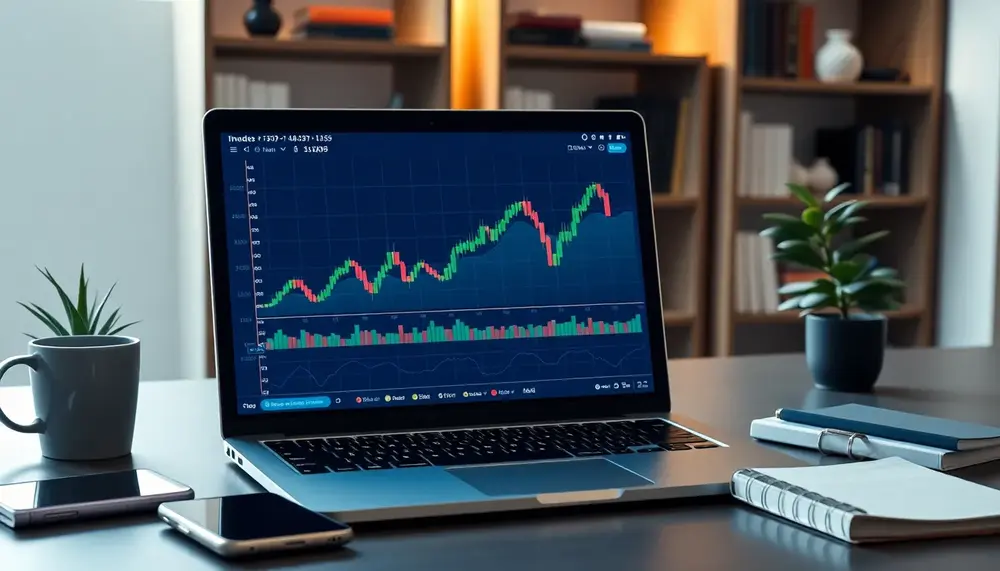High-frequency trading
High-frequency trading
What is High-Frequency Trading (HFT)?
High-frequency trading, often abbreviated as HFT, is a type of trading that is characterized by a high speed and high turnover rates. It involves complex algorithms to analyze multiple markets and execute orders based on market conditions. Typically, the traders with the fastest execution speeds will be more profitable than traders with slower speeds.
How Does High-Frequency Trading Work?
In HFT, powerful computers utilize advanced software to execute a large number of orders at lightning-fast speeds. These high-speed computers can buy and sell assets like stocks, options, and in the case of cryptocurrencies, digital assets, within fractions of a second. This is much faster than any human could process and react to market information.
The Impact of HFT on Finance and Cryptocurrencies
High-frequency trading has had a significant impact on the financial markets by increasing liquidity and reducing the cost to trade securities. In the world of cryptocurrencies, HFT can be seen as a double-edged sword. While it can provide similar benefits as it does to traditional markets, it also can create certain risks such as market manipulation and rapid price changes.
HFT and Growth
The adoption of high-frequency trading has been a key driver of growth in financial markets. It allows for more efficient and effective trading, which can lead to better pricing and more dynamic financial markets. As the technology evolves, it is likely that HFT will become an even more integral part of trading, particularly in the ever-growing cryptocurrency market.
Mindset and Success in High-Frequency Trading
Success in high-frequency trading requires a different mindset than traditional trading. Traders involved in HFT must be comfortable with rapid decision-making and processing large volumes of data. They must also be adaptable to new technologies and algorithms to stay competitive in this fast-paced environment.
In conclusion, high-frequency trading represents a significant innovation in financial markets. It is a clear example of how technology can drive growth, change market dynamics, and require a rethinking of traditional mindset approaches to ensure success. As with any powerful tool, it comes with its own set of challenges and opportunities.
Blog Posts with the term: High-frequency trading

Future markets are essential for managing price risks and offering profit opportunities by allowing traders to buy and sell contracts for future asset delivery. Key trends include increased electronic trading, algorithmic trading, expansion of asset classes, regulatory changes, and a...

Accurate crypto transaction reporting is essential for legal compliance, financial accuracy, and avoiding penalties. Understanding key tax forms like Form 8949 and Schedule D ensures proper documentation of gains, losses, and income while safeguarding your financial future....

XPES crypto trading offers fast transactions, low fees, and accessibility for both beginners and experienced traders, making it a versatile option in the cryptocurrency market. Its innovative features, growing ecosystem, and adaptability provide opportunities for short-term gains or long-term investments...

The article explores innovations in blockchain and crypto, from NORDO's meme coin addressing climate issues to high-speed systems like Coreum and NYU’s energy-efficient Bounce. It highlights the transformative potential of decentralized technologies across finance, activism, and sustainability....

The convergence of blockchain and quantum computing is driving transformative innovations in energy efficiency, security, scalability, and practical applications across industries. Key advancements include D-Wave's quantum blockchain research, Stanford's pioneering efforts in cryptographic solutions, and emerging crypto trends emphasizing real-world...

Crypto trading involves buying, selling, and exchanging digital assets like cryptocurrencies, offering flexibility and high potential returns in a 24/7 market. Understanding its components—such as exchanges, wallets, order types—and the role of blockchain technology is essential for navigating this dynamic...
